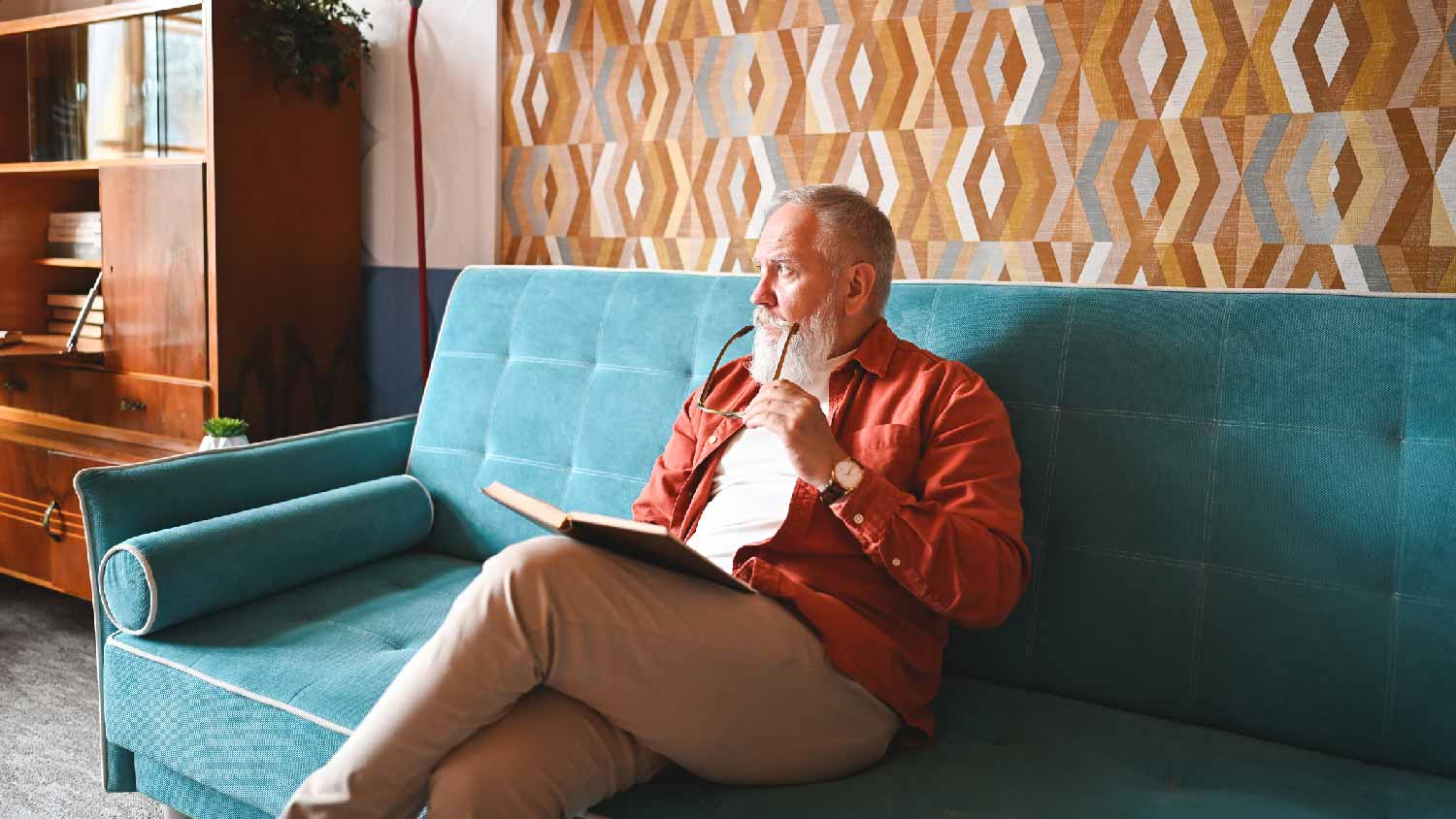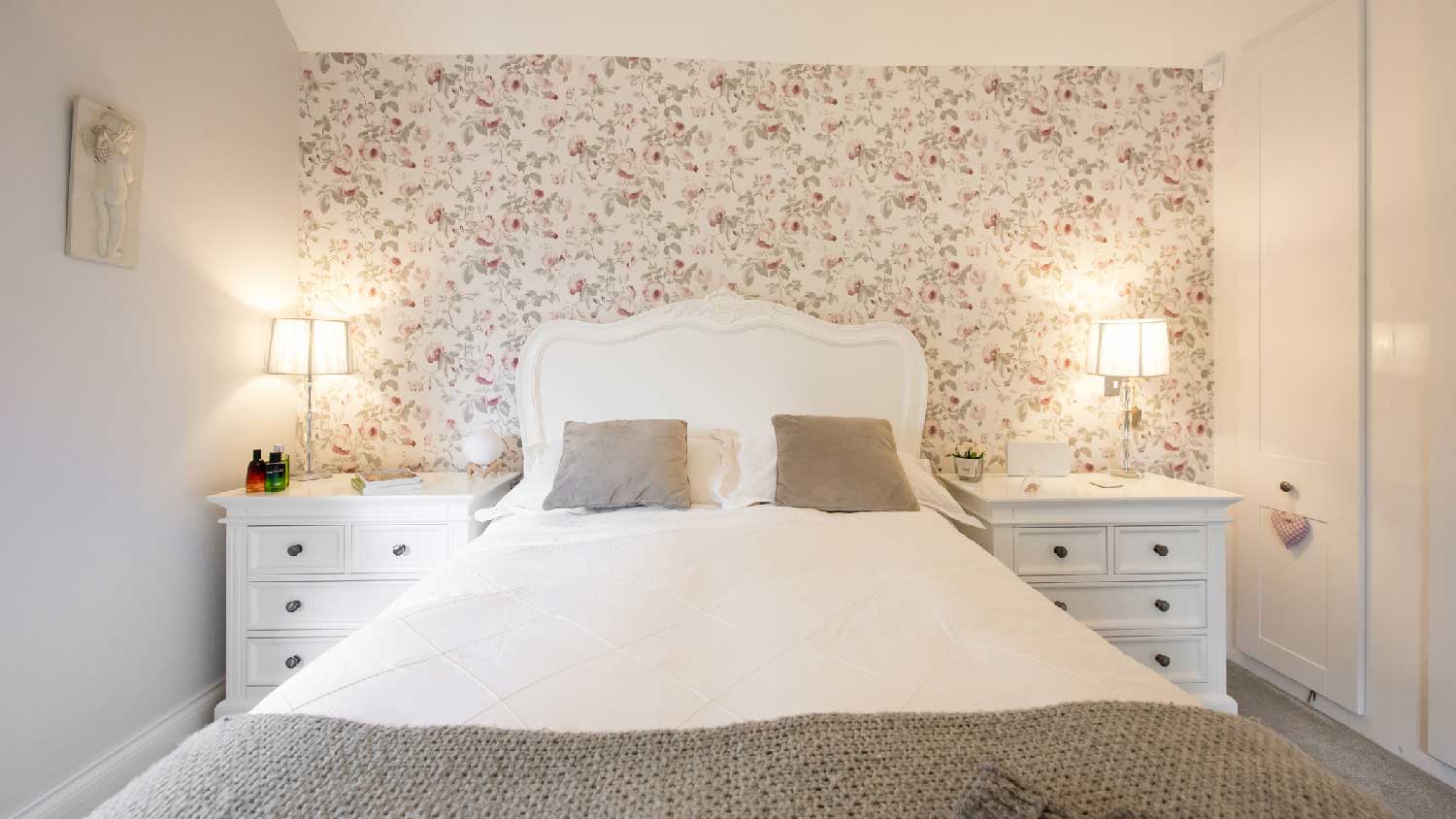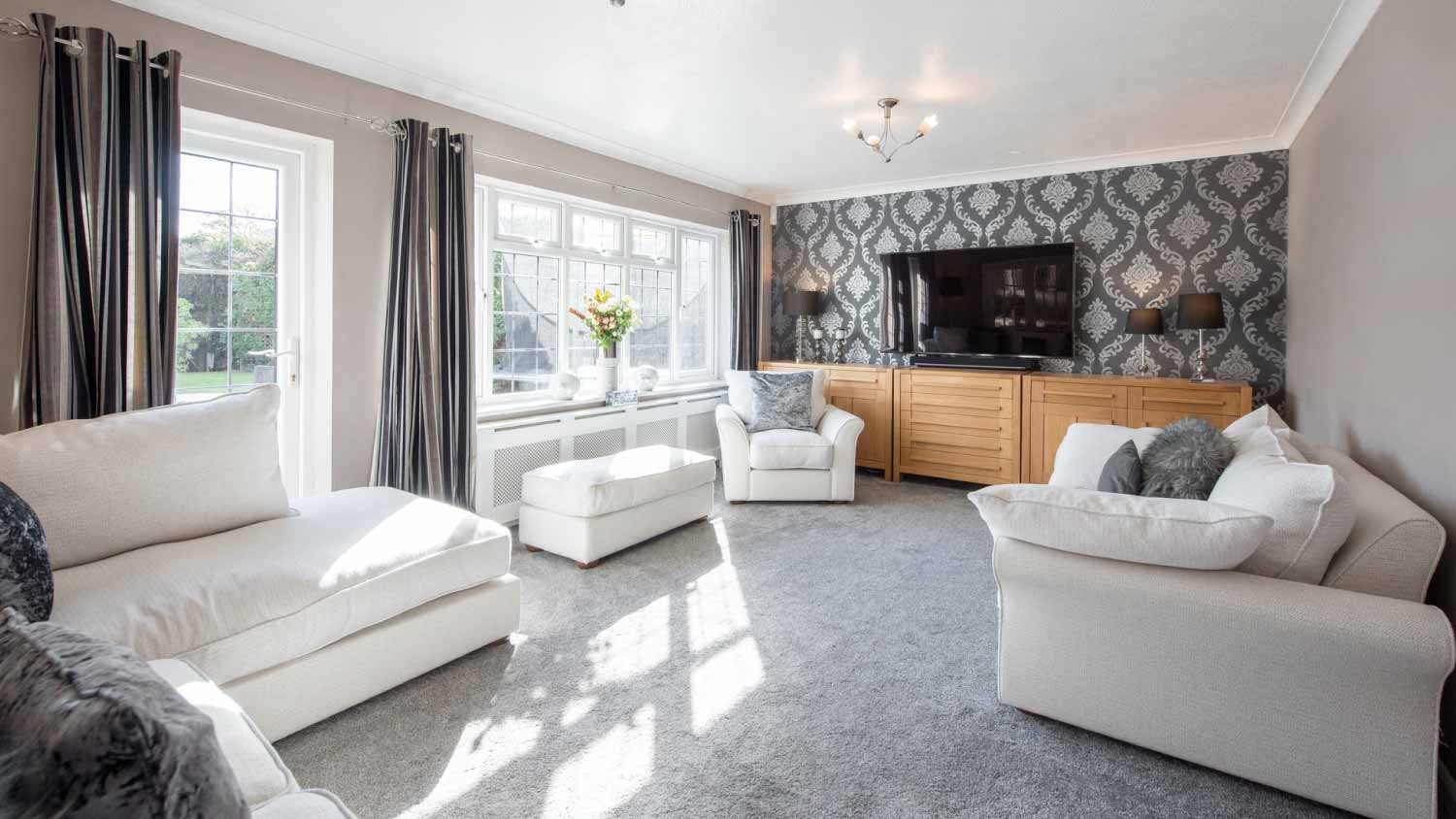Does Peel-and-Stick Wallpaper Damage Walls? What You Need to Know
Don’t get stuck with damaged walls
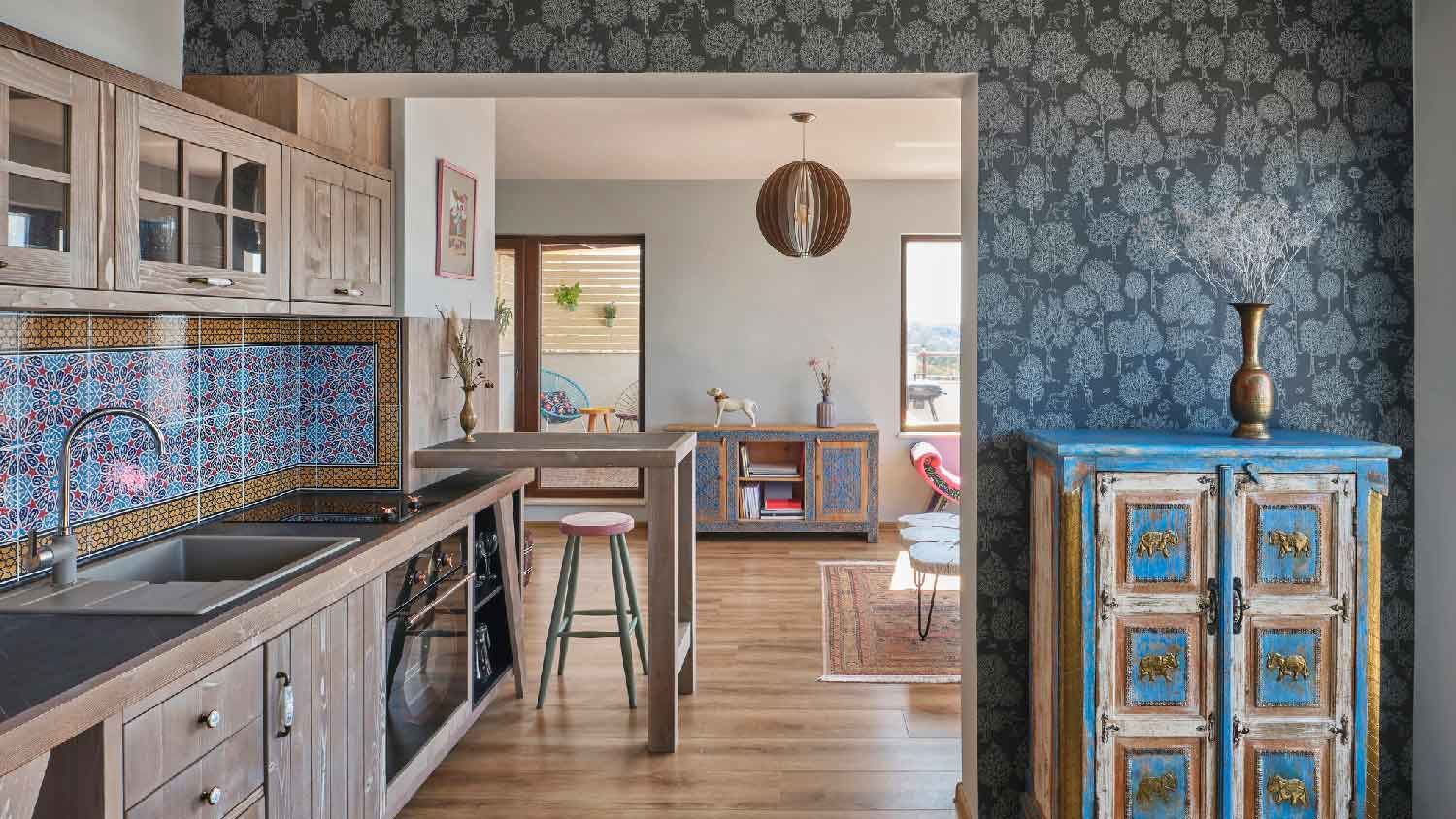

Peel-and-stick wallpaper doesn’t normally damage smooth, painted walls.
Peel-and-stick wallpaper can damage textured walls or materials like wood and metal.
Short-term use, around one to three years, makes it easier to remove wallpaper.
Removing peel-and-stick wallpaper slowly is key to reducing damage risks.
You’re looking for a quick way to breathe new life into a room, and you’re considering adding a bold statement with peel-and-stick wallpaper. But one concern keeps you from moving forward with your next home improvement project: Does peel-and-stick wallpaper damage walls? It all depends on the specific wallpaper product, the prep, and how you remove it. Here’s everything you need to know about removing peel-and-stick wallpaper without damage.
Does Peel-and-Stick Wallpaper Damage Walls?
Peel-and-stick wallpaper won’t always damage your walls, but sometimes, improper installation, permanent adhesive products, and hasty removal can lead the wallpaper to damage your walls down the line. Here are some factors that affect whether peel-and-stick wallpaper will damage your walls.
Type of Adhesive
After you measure for wallpaper and start shopping around for peel-and-stick options, look for products that specifically say they are removable or temporary. “Permanent” peel-and-stick wallpapers are made with a stronger glue that could adhere more to the paint behind the wallpaper. That means when it’s time to peel off the wallpaper, the paint is more likely to come off with it.
Surface Material
Maybe you’re wondering whether you can apply wallpaper to textured walls or spruce up a metal or wood surface with some peel-and-stick wallpaper. Peel-and-stick wallpaper works best on smooth, painted drywall. It can peel off your paint, leave behind a residue, or damage the surface of other materials, including metal, wood, or tile.
For painted walls, peel-and-stick works best with glossy, semi-gloss, satin, or eggshell paint finishes. The smoother finish allows the wallpaper to peel off with less risk of taking strips of paint with it during removal.
Wallpaper Type
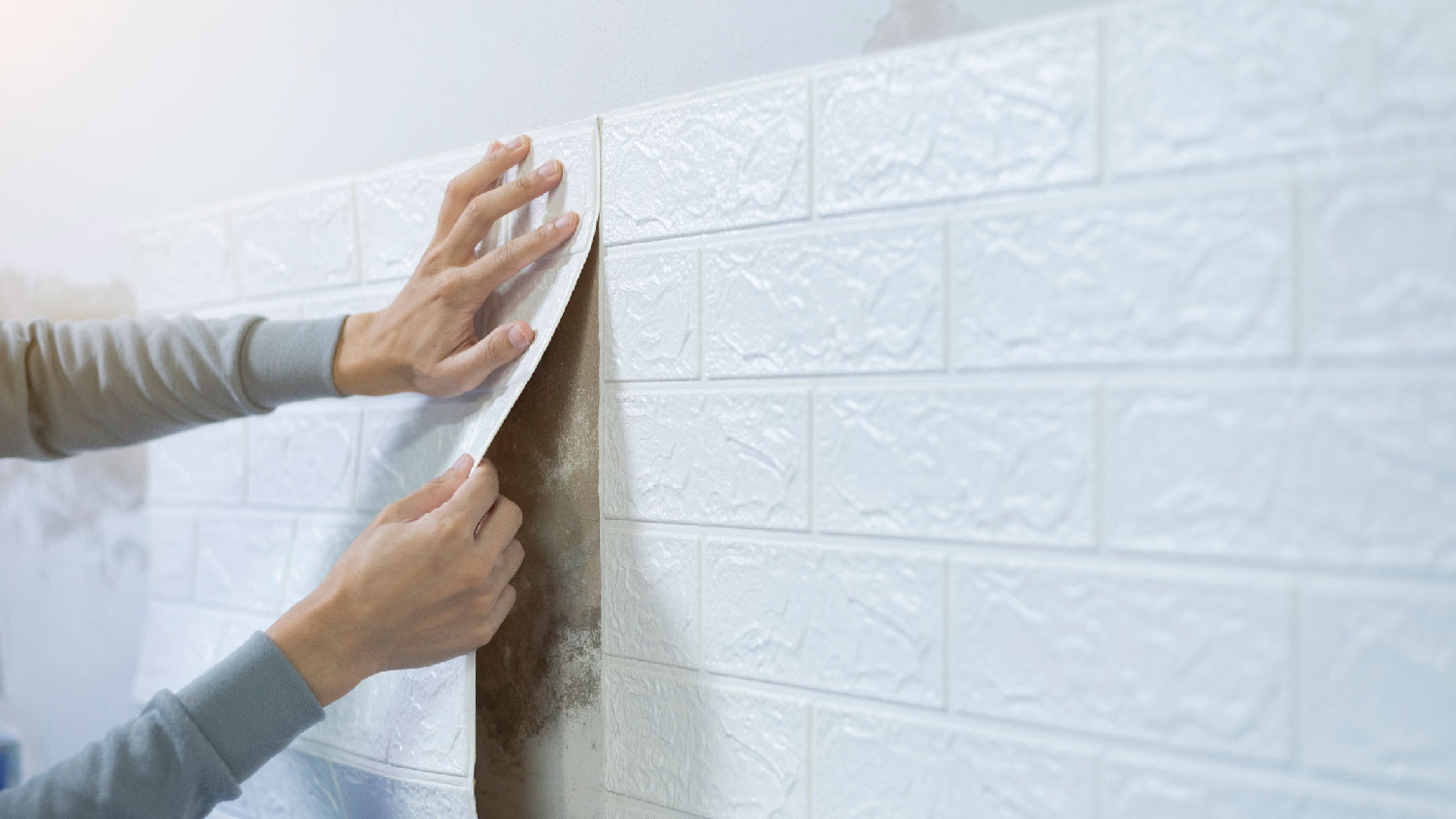
The type of wallpaper can also determine whether or not peel-and-stick wallpaper damages walls. Peel-and-stick paper is less likely to cause problems with removal, so consider the paper varieties rather than vinyl if you’re worried about paint peeling off of the wall. However, if you want the look or benefits of vinyl, look for vinyl-coated paper.
There is one exception, though. If you plan to add washable wallpaper to a bathroom or other high-humidity area, stick to vinyl. This reduces the risk of moisture damaging the walls behind the wallpaper.
Wallpaper is a great option for moisture-rich environments like kitchens and bathrooms, so long as you choose the right type. We've had plenty of success wallpapering bathrooms using vinyl options, which are water-resistant and hold up well.
Length of Application
Peel-and-stick wallpaper lasts five to seven years, but the longer it’s on the wall, the more the adhesive can bond to the paint and make it harder to remove. On the other hand, the longer it’s on the wall, the more likely the wallpaper is to fade, crack, or peel.
For the best look and easiest removal, consider keeping peel-and-stick wallpaper on a wall for just one to three years and removing it after that time.
Wallpaper Application Prep Tips to Minimize Damage
Knowing how to apply peel-and-stick wallpaper correctly is half the battle in preventing damage to your walls. As you start rolling out the panels, keep these tips in mind as insurance for easier removal down the line.
Test a small area: Apply a small square of wallpaper in an inconspicuous area and let it sit for a few days to a week. Remove it to test if it damages the wall.
Clean the wall: Make sure to wipe down the wall with warm water and a gentle soap and dry it thoroughly. This ensures the adhesive will stick properly to the wall.
Consider primer and paint: Fresh primer and smooth paint allow for the best peel-and-stick application. If you add primer or paint, make sure to let them cure for one month before adding wallpaper.
If you’re concerned about damaging your walls, talk to a wallpaper installer near you for help. A pro can ensure the walls are clean and smooth, and they’ll be able to apply peel-and-stick wallpaper in a way that minimizes the risks to your walls. You can also call a pro for help removing the wallpaper when you’re ready to refresh your space again.
How to Remove Peel-and-Stick Wallpaper Without Damage
While removing peel-and-stick wallpaper is considered easier and less damaging than removing wallpaper paste, there’s still a risk of peeling off the paint behind the wallpaper. If you want to avoid repainting the wall or sacrificing part of a rental deposit, here are some tricks for removing peel-and-stick wallpaper without damage.
Apply heat: Hold a steamer, hair dryer, or heat gun 3 to 6 inches from the wallpaper surface. Work from top to bottom in smaller sections. As the adhesive heats up, it becomes gummy and easier to peel away without damage.
Work slowly: Whether you use heat or not, peel the wallpaper off the wall slowly. If you work quickly or forcefully, you risk ripping paint off the wall.
Use vinegar or adhesive remover: If the adhesive is stubborn, you can spray distilled white vinegar or commercial adhesive remover on it and use a sponge to remove it. Start in an inconspicuous area to make sure the cleaner doesn’t damage the paint or wall. Wipe the wall dry after removing the adhesive.
Frequently Asked Questions
Many peel-and-stick wallpapers aren’t moisture-resistant, so if you install them in high-humidity rooms, mold can grow behind the wallpaper. It’s best to reserve peel-and-stick wallpaper for bedrooms, living rooms, and other rooms with lower humidity levels. Not only does this minimize the risk of mold growth, but it also keeps the wallpaper from bubbling or peeling.
Your peel-and-stick wallpaper can fall off for multiple reasons, including high humidity levels, extreme temperature changes, poor installation, and even the wall surface. Textured walls can prevent the adhesive from fully sticking to the wall, making it more likely for the wallpaper to peel off. Low-quality wallpapers with weaker adhesives are also more likely to fall off prematurely.
You can reattach peeling peel-and-stick wallpaper using a commercial wallpaper adhesive. Make sure to choose an option that is repositionable and temporary, especially if you are concerned about wall damage. Or, you can remove the peeling panel and replace it with a new roll of the same peel-and-stick wallpaper design.


